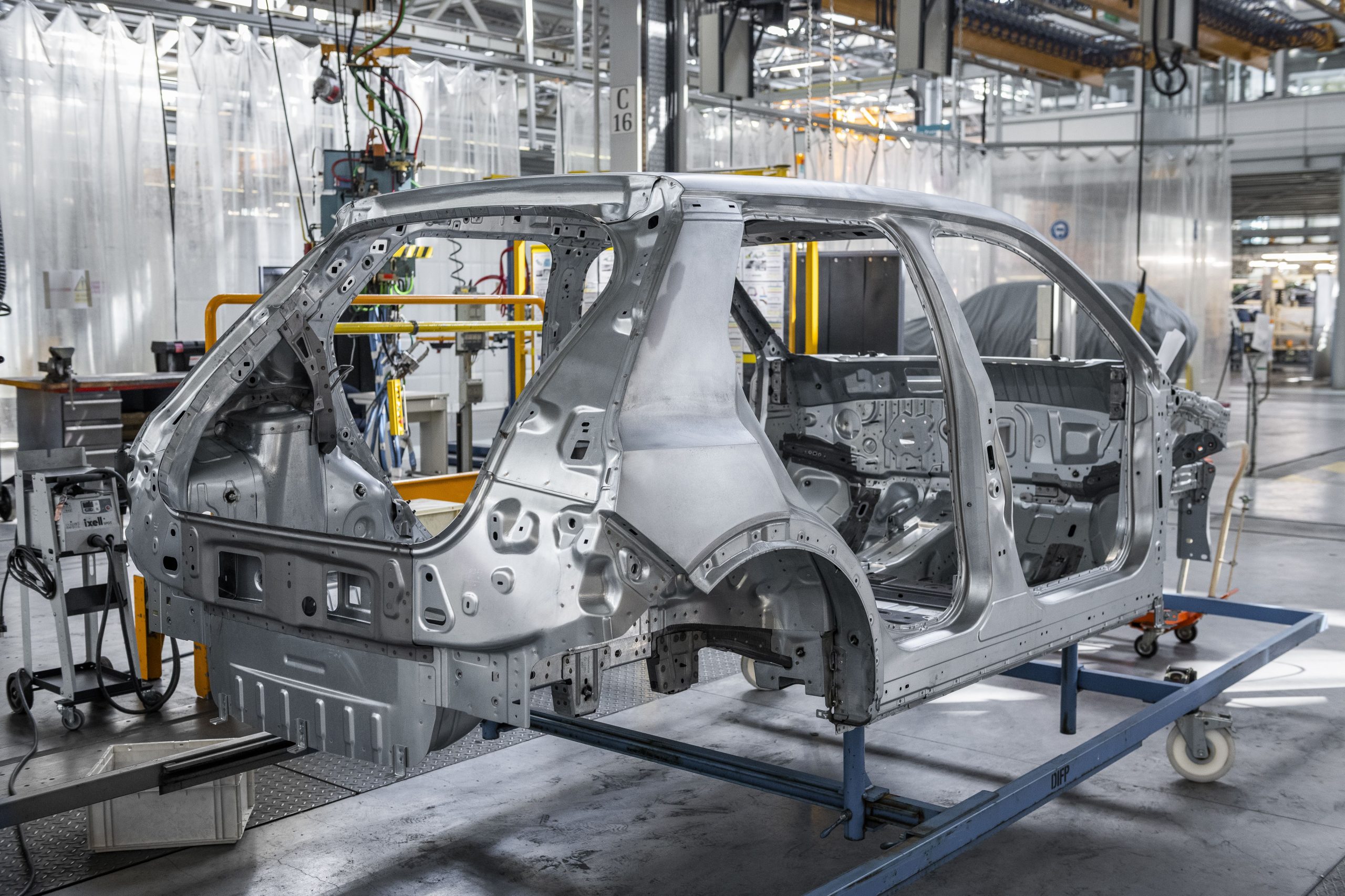 Foto: Renault Communications
Foto: Renault Communications
At the Renault Technocentre near Paris, the upcoming all-electric Renault 5 is undergoing the metamorphosis from study to production model in prototype production. The first vehicles are being built in the top-secret miniature factory, as they will roll off the production line in the future at the Douai site in northern France. The aim is to check conformity in advance and ensure the highest possible level of quality in the future production process.
Only authorized Renault personnel have access to the large prototype production building in the Technocentre; mobile devices are strictly prohibited. Established 25 years ago, the prototype center is unique. Renault is one of the few automakers to have a comparable facility where assembly procedures and processes are simulated as in a regular automotive manufacturing facility. By copying the processes in detail, the center can produce prototypes in line with the manufacturing processes used in future series production. In this way, it is possible to validate the industrial assembly processes and fine-tune the manufacturing rhythm in all construction phases.
Mules: Assembly of the very first all-electric Renault 5 vehicles.
Before large-scale production of the Renault 5 starts in Douai, the “Mules” (“mules”), which are technically identical to the future production model, are being created in prototype construction. The Mules for the upcoming all-electric compact model, which have been in production since October 2021, were given the silhouette of the Renault Clio as camouflage. With this camouflage, the precursors underwent extensive testing in Lapland as part of the development process for the new CMF-B EV platform. The next step will be the “Vehicle Check” prototypes, which, unlike the Mules, already match the design of the future production version. These vehicles, still in camouflage, are on European roads before the final adjustments are made. The “Vehicle Check” prototypes of the upcoming Renault 5 are currently at the production stage.
Extreme tests for the final touches
Coordinated processes, tools and parts enable the factory teams to focus primarily on the production ramp-up. They are supported by the experts at the prototype center, who accompany the training of the plant staff. The prototype phase serves as a bridge between design concept and large-scale production and offers the opportunity to translate preliminary approaches and numerical data into concrete solutions that can be tested and validated. Gap dimensions are recorded to the nearest tenth of a millimeter in order to validate body panels and supplier parts. All software, connections and electronics are also extensively tested. The proximity of the Technocentre to the development teams of the electric Renault 5 enables questions to be clarified quickly and directly on site.
In total, more than 60 vehicles representative of the future all-electric Renault 5 are being built in prototype production. The vehicles are tested extensively over long distances, in some cases under extreme conditions – in extreme cold and heat, in mountainous terrain, etc. The results finally enable the final fine-tuning to the production model.
Premiere for Mobilize Service Vehicle-to-Grid
Incidentally, the all-electric R5 will be the first Renault vehicle equipped with a bidirectional charger. With the help of the Mobilize Powerbox charging station and the Mobilize V2G service, Renault 5 owners will then even be able to feed their electricity back into the grid. In addition, the electricity used to charge the batteries will be carbon neutral, according to the Mobilize electricity contract. With Mobilize V2G, electric vehicles become a source of energy for households and the power grid, enabling greater flexibility. As a result, they also facilitate the integration of renewable energy into the energy mix. Mobilize’s V2G service not only allows charging to be paused during peak periods, but also allows electricity to be fed back into the grid. This is especially useful when electricity is expensive and demand on the grid is high. Conversely, charging only takes place when the supply of electricity in the grid is high and therefore cheaper.
You can also read this article in the current eMove360° magazine in german language, which you can download here free of charge or order as a print version in the store.